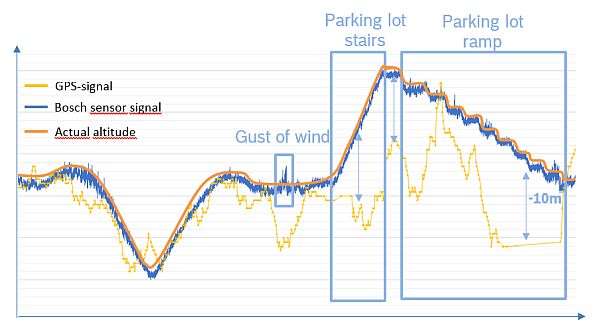Today’s smartphones utilize a wide array of accelerometers, gyroscopes and various other sensors in their designs. Relatively unknown is the barometric pressure sensor, which measures air pressure. These sensors are currently being integrated into premium-grade smartphones, but are also becoming more common in mainstream phones or wearables such as fitness trackers and Internet of Things (IoT) applications.
Why measure air pressure?
A barometric pressure sensor measures air pressure and can, therefore, play a key role in weather forecasting – lower pressure indicates that poor, rainy weather is more likely. Also, air pressure is affected by altitude changes, which means that such a sensor can provide highly accurate information about vertical elevation.
Let’s take a look at some of the most significant applications and the role that barometric pressure sensors perform in consumer equipment.
Indoor navigation
Indoor navigation is one of the more interesting applications for this technology, where air pressure data is interpreted to determine the user's current floor level in a building – this is useful for finding one’s way through shopping malls or underground parking lots.
GPS-based systems do not generally function inside large modern buildings, which tend to block out satellite signals. To enable navigation in such shielded environments, altitude detection with the help of the pressure sensor can be combined with step counting data from an accelerometer to establish a three-dimensional matrix, otherwise commonly known as 3D navigation.
Indoor localization is essential for accurately identifying a caller’s location when they call emergency services. In the USA, the FCC (Federal Communication Commission) has recently updated their E911 rules, mandating that the location of a 911 caller indoors be automatically transmitted to emergency responders. It is expected that all smartphones will require a pressure sensor for the purpose of accurately pinpointing a caller’s location inside a large building.
Read more: Air pressure sensors in smartphones


